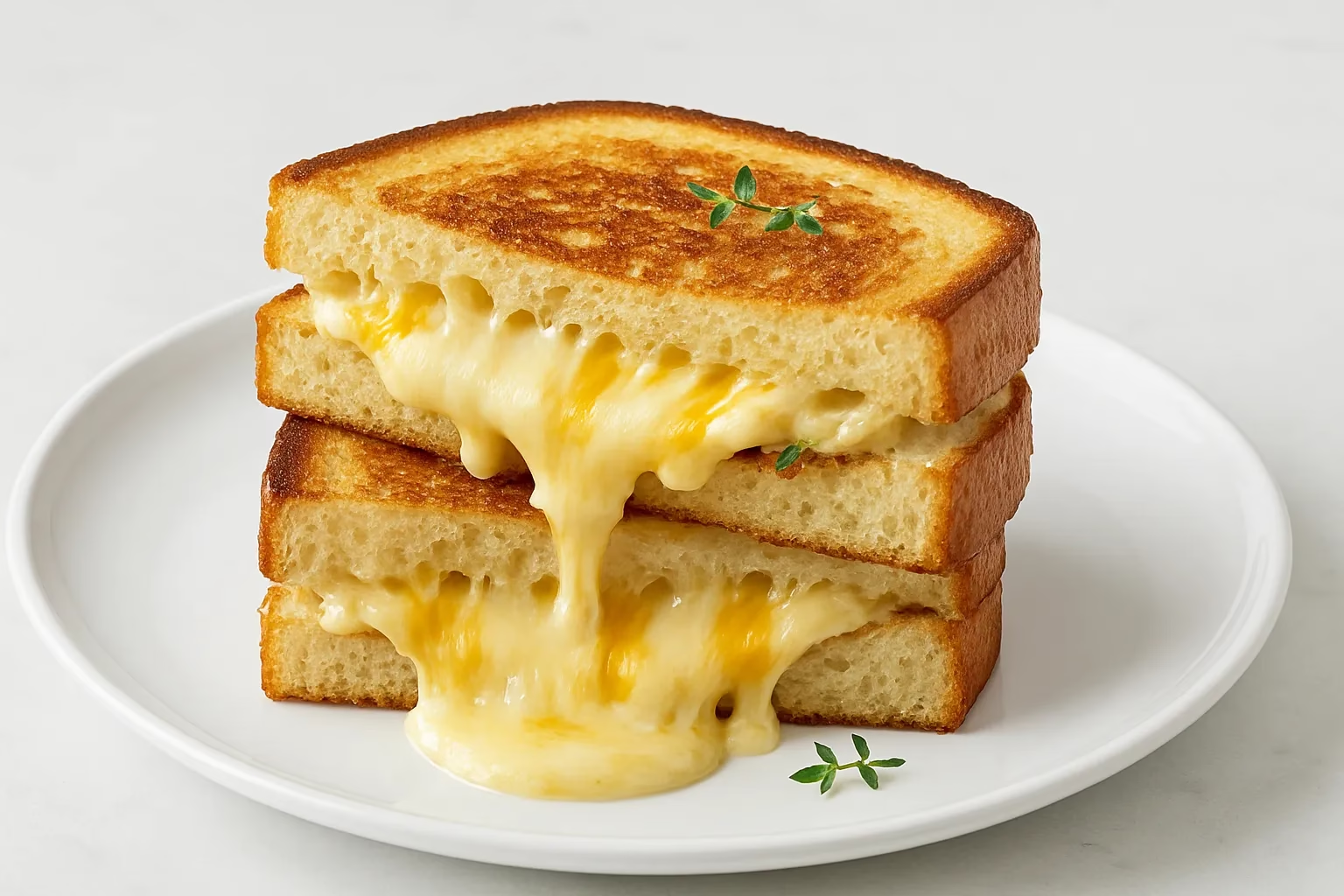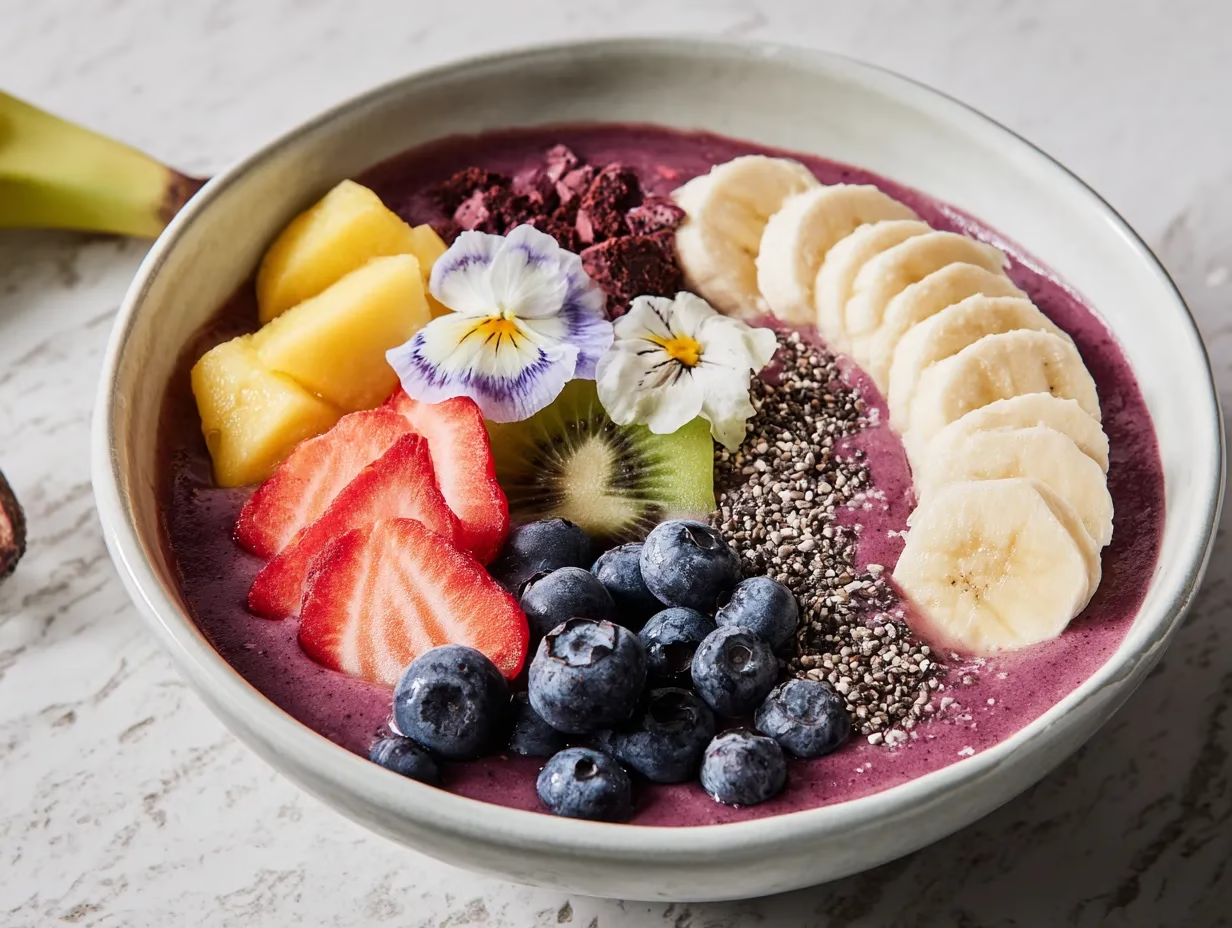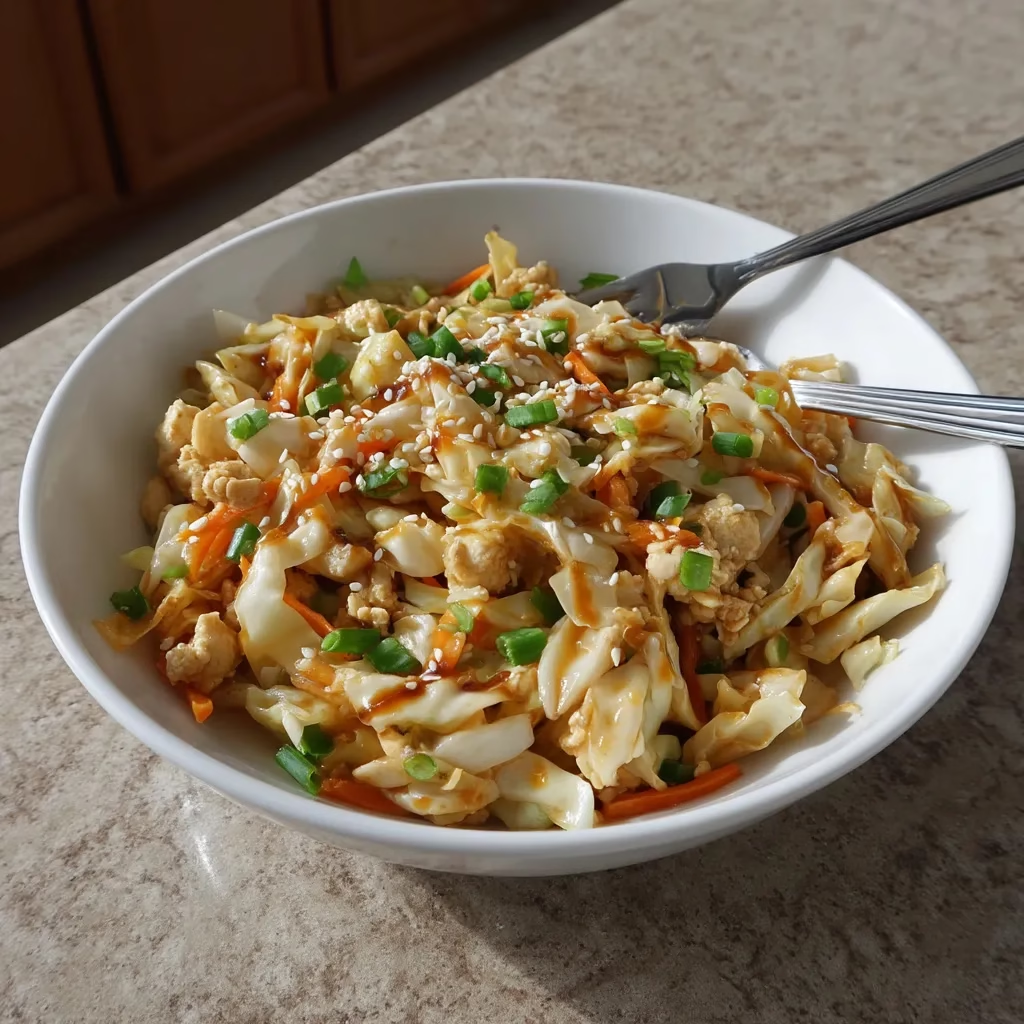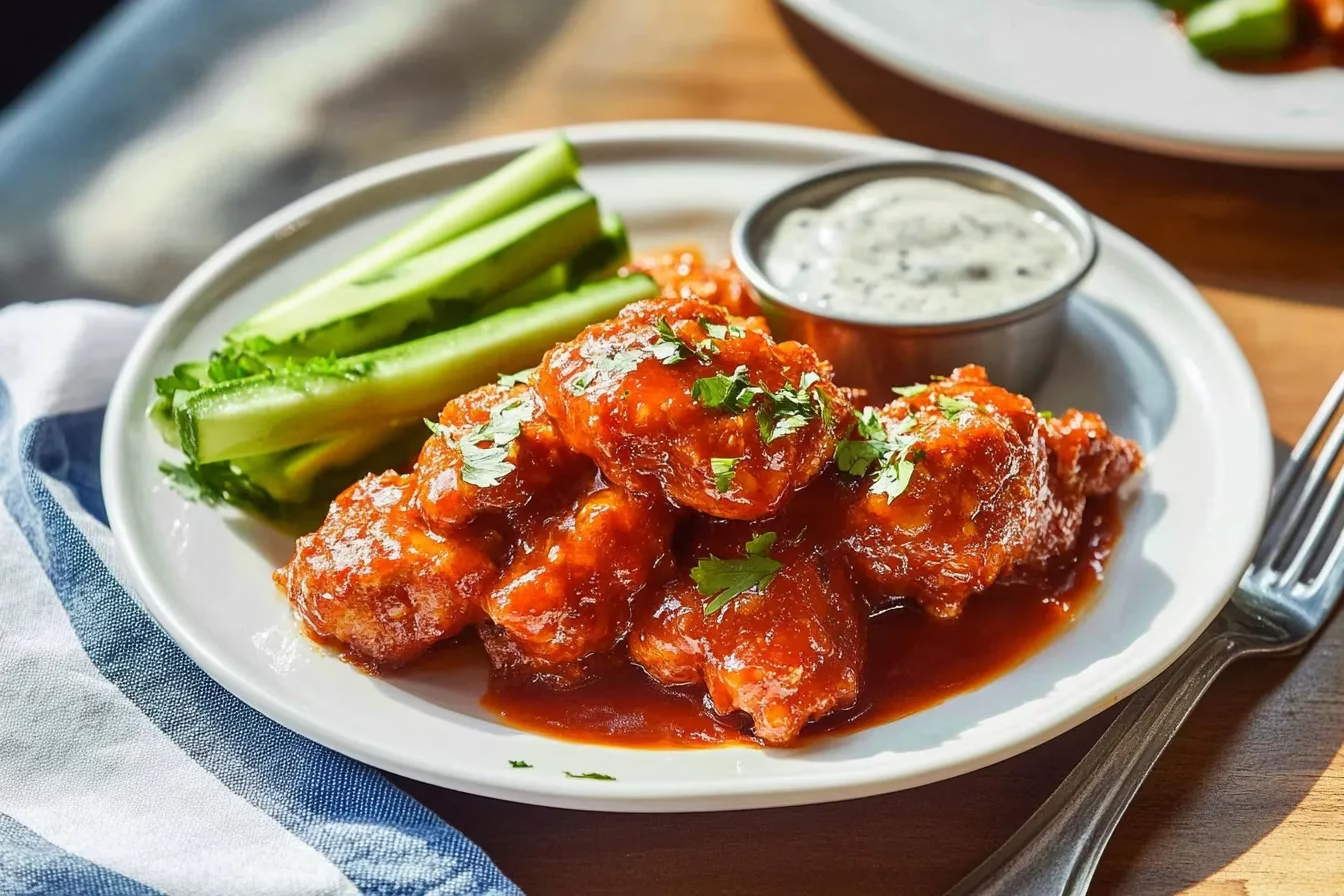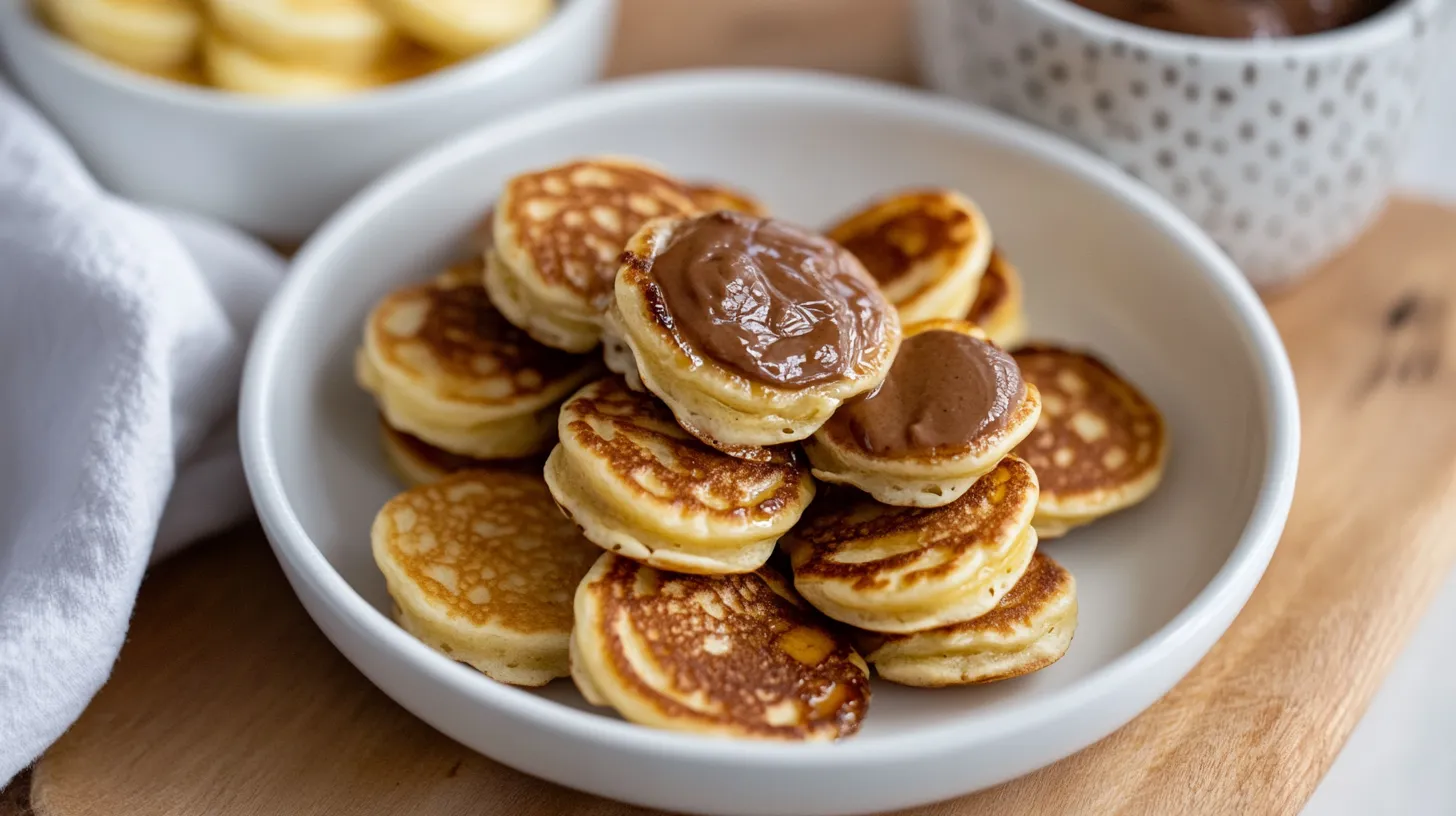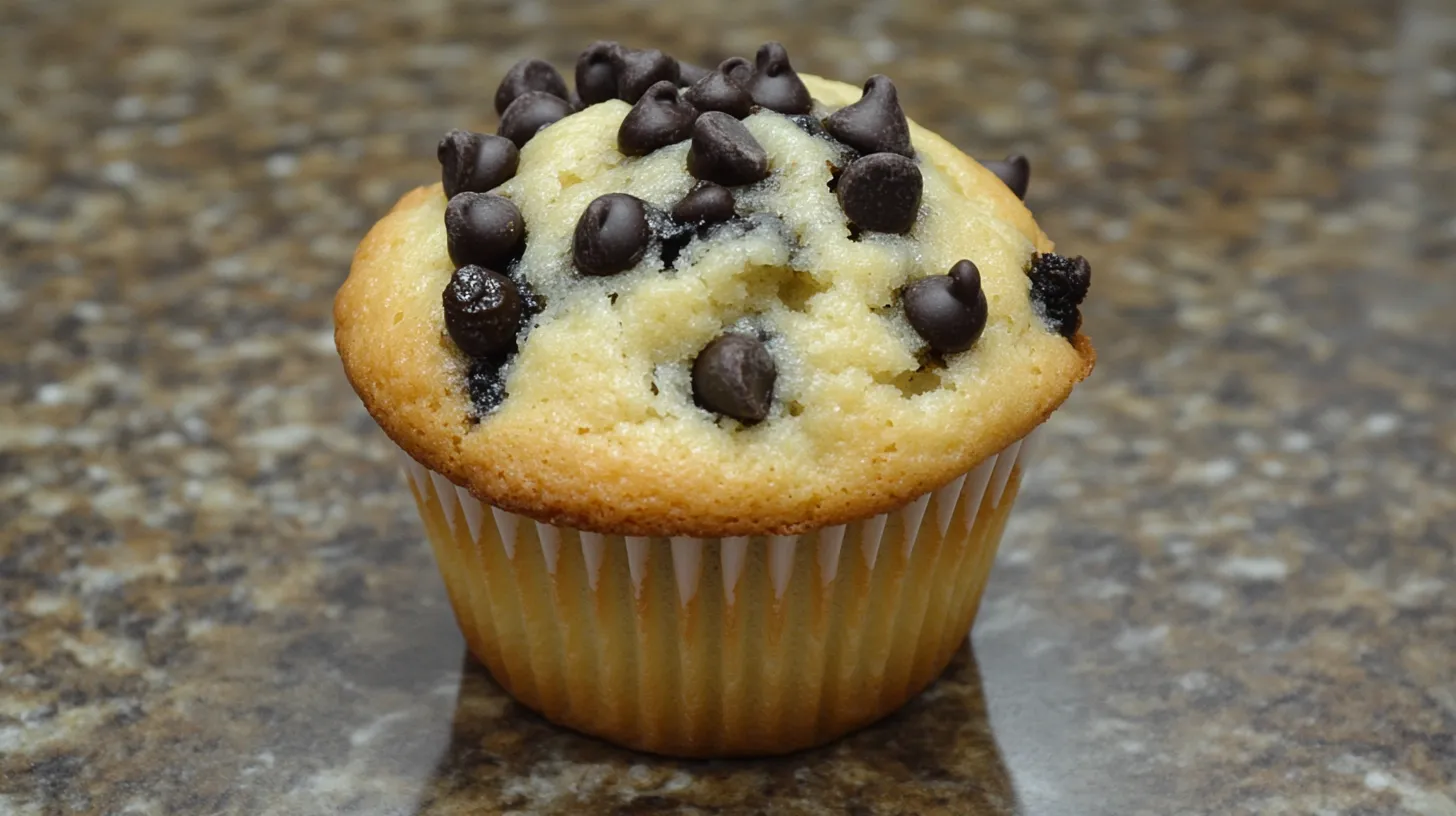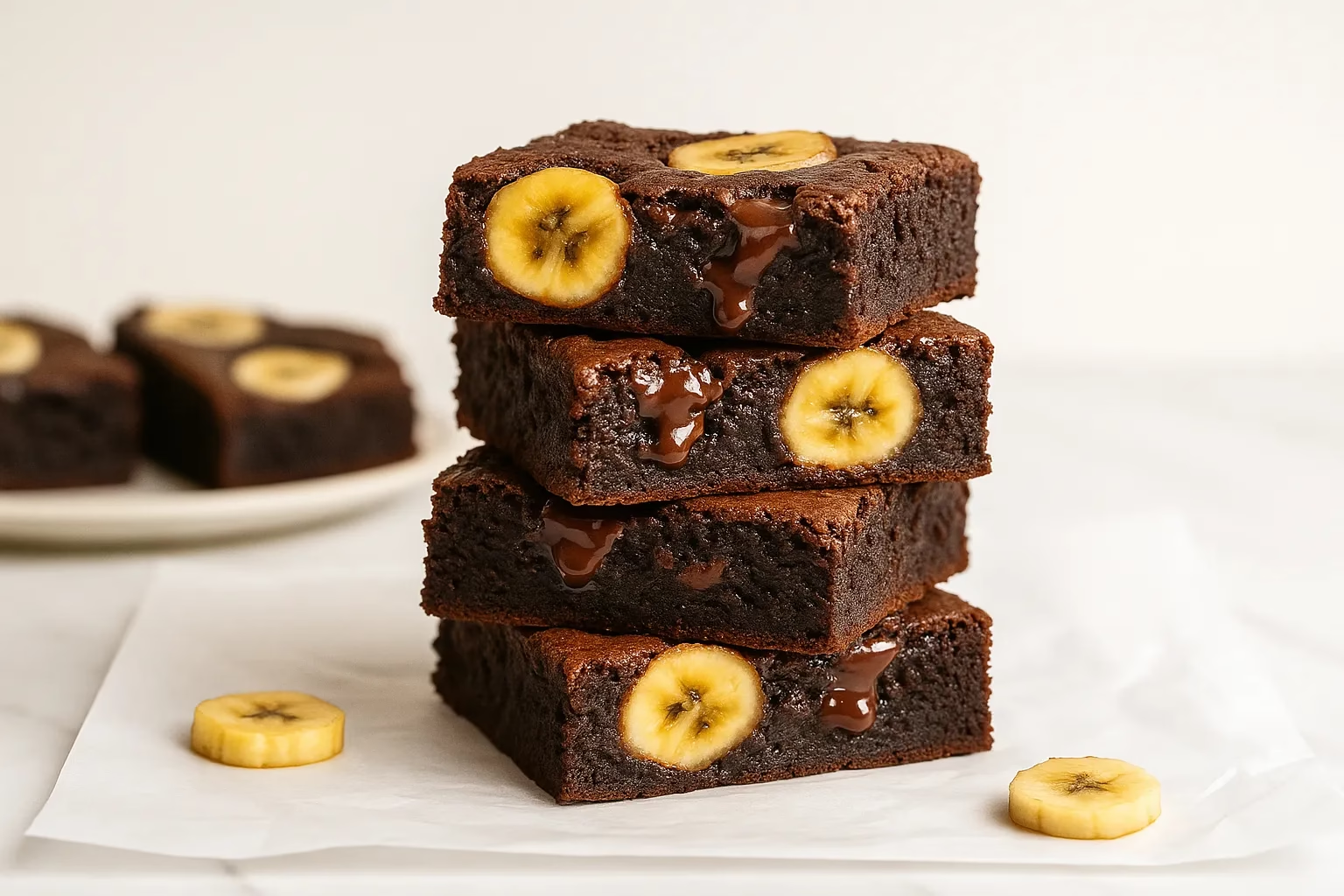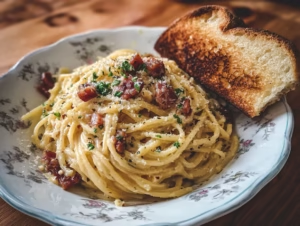I remember my first Poke Bowl experience – it was instant love! The mix of fresh fish, savory sauces, and crunchy bits was amazing. If you haven’t tried it yet, you’re in for a treat. A Poke Bowl is more than food; it’s a mix of flavors, health, and fun.
I love trying new foods from around the world. I’m excited to share my Poke Bowl journey with you. We’ll explore what makes it special, its history, and how to make it at home.
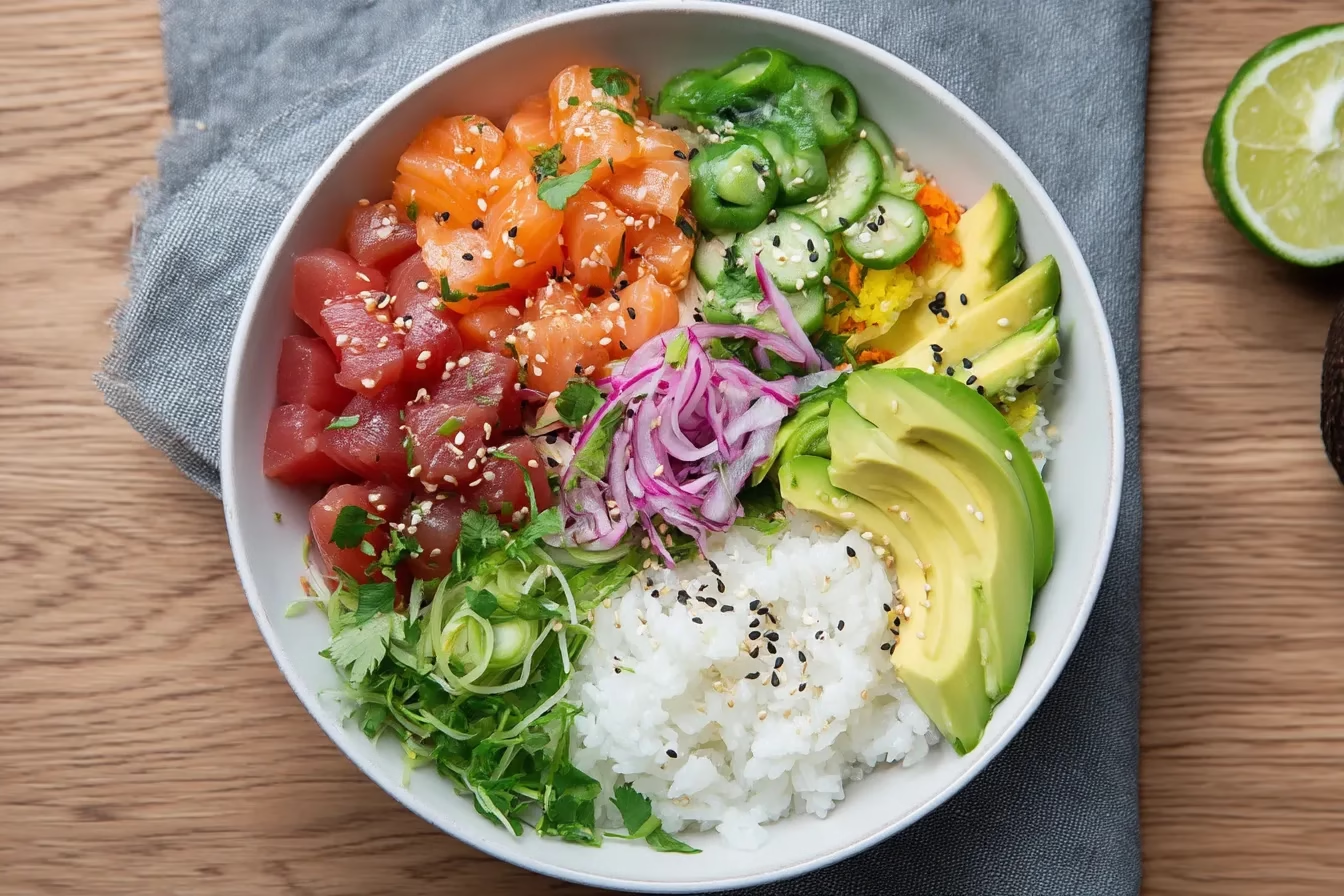
Classic Hawaiian Poke Bowl
Equipment
- Rice cooker
- Mixing bowl
- Sharp knife
Ingrédients
- 1 lb sushi-grade ahi tuna
- 2 tbsp soy sauce
- 1 tbsp sesame oil
- 1 tbsp rice vinegar
- 1 tsp honey
- 1/4 cup light mayonnaise
- 1 tsp sriracha
- 4 cups cooked brown rice
- 1 cup diced cucumber
- 1/2 cup shredded carrots
- 1/2 cup shelled edamame
- 2 large avocados, peeled and sliced
- 1 tbsp black sesame seeds
- 1 tsp chopped green onion
Instructions
Prepare Tuna
- Cut the sushi-grade ahi tuna into bite-sized cubes.
- In a bowl, mix soy sauce, sesame oil, rice vinegar, and honey.
- Add the tuna cubes to the marinade and refrigerate for at least 15 minutes.
Prepare Spicy Mayo
- In a small bowl, combine light mayonnaise and sriracha. Mix well.
Assemble Bowl
- Place 1 cup of cooked brown rice into each serving bowl.
- Arrange diced cucumber, shredded carrots, shelled edamame, and sliced avocado on top of the rice.
- Add marinated tuna over the vegetables.
- Drizzle with spicy mayo.
- Garnish with black sesame seeds and chopped green onion.
Video
Nutrition
Table of Contents
Table of Contents
What is a Poke Bowl?
The Poke Bowl is more than a meal; it’s a cultural experience. It’s a dish with raw, marinated fish on rice, topped with various ingredients. It shows Hawaii’s rich food heritage.
Origins of Poke
Poke means « to cut or slice » in Hawaiian. It started with fishermen seasoning their catch with sea salt and seaweed. This dish was a favorite among Native Hawaiians. Later, Poke changed with new cultures, adding different ingredients and ways of cooking.
Key Ingredients
A traditional Poke Bowl has key ingredients. These include sushi-grade fish, soy sauce, and sesame oil. It’s served over sushi rice with seaweed salad, cucumber, and pickled ginger. Now, you can also find Poke Bowls with avocado, edamame, or mango for a fresh twist.
Traditional vs. Modern Poke
Traditional Poke is deeply rooted in Hawaiian culture. But modern Poke has grown to include many flavors and ingredients. You can find Poke Bowls with spicy tuna, wasabi mayo, or even vegan options. This makes Poke Bowls a dish for everyone, no matter their taste or diet.
How to Build Your Own Poke Bowl
Making your own Poke Bowl is fun and easy. It doesn’t matter if you’re a pro in the kitchen or just starting out. Creating a Poke Bowl is a great way to enjoy a tasty meal.
Choosing the Base
The base of your Poke Bowl is key. You can pick from sushi rice, mixed greens, or cauliflower rice for a low-carb option. Sushi rice gives a traditional taste, while mixed greens are lighter and fresher.
Think about what you like in terms of taste and texture. For example, if you choose spicy protein, a mild base like rice or greens helps balance it out.
Selecting Proteins
The protein is the main attraction in a Poke Bowl. You can choose from sushi-grade tuna, salmon, and octopus, or go for cooked options like grilled chicken or tofu.
Make sure your protein is fresh and of high quality. Sushi-grade fish is safe to eat raw. If you’re new to raw fish, start with cooked options or tofu.
Adding Toppings and Sauces
Now it’s time to get creative with toppings and sauces. You can add diced mango, cucumber, avocado, and pickled ginger. These add flavor, texture, and look to your bowl.
For sauces, try soy sauce, sesame oil, and spicy mayo. The goal is to mix flavors so your bowl isn’t too salty, sweet, or spicy. Try different mixes to find your favorite.
- Mango adds a sweet and tropical flavor
- Cucumber provides a refreshing crunch
- Avocado contributes a creamy texture
- Pickled ginger adds a tangy and sour taste
Common Mistakes When Making Poke Bowls
Making a Best Poke Bowl is more than just mixing ingredients. It’s an art that needs detail and knowledge.
Many cooks make mistakes by missing important steps. Let’s look at common errors and how to avoid them for a tasty Poke Bowl.
Overlooking Freshness
Using old ingredients is a big mistake. Freshness is essential for a great Poke Bowl. Stale or low-quality ingredients can ruin the taste, no matter how well you prepare it.
Always check the freshness of your fish and other ingredients. Make sure the fish is sashimi-grade and handled right. Choose fresh veggies and herbs to improve the dish.
Ignoring Flavor Balance
Not balancing flavors is another mistake. A good Poke Bowl has salty, sweet, sour, and umami flavors in harmony. Too much of one flavor can ruin it.
To get the right balance, think about each ingredient’s flavor. If you use a strong sauce, balance it with something sour like citrus or pickled ginger.
Try different combinations to find the perfect balance for you. Remember, Poke Bowls are all about customizing, so don’t be shy to experiment!
Where to Find the Best Poke Bowls in the U.S.
If you’re looking for the best Poke Bowls in the U.S., you’re in luck! I’ve got the scoop for you. Poke Bowls are everywhere, from traditional Hawaiian to new fusion bowls.
I’ve searched the country for the top Poke Bowl spots. Whether you live here or are visiting, you’ll find the perfect place for Poke.
Popular Chains
For consistent Poke Bowls, try popular chains. Poke Bowl Co. and Bluefin Poke are known for quality and taste. They offer great Poke Bowls across the country.
Some chains even offer Poke Bowl delivery. This means you can enjoy your favorite dish at home. For example, SushiSamba and Poki Poki deliver through food apps.
Sourcing Quality Ingredients
Freshness is key for Poke Bowl ingredients. Here’s how to find the best:
- For fish, get sushi-grade tuna, salmon, or other sashimi-grade fish at your local market.
- Use short-grain Japanese rice, which is stickier and clings better.
- For veggies, pick what’s in season and choose colors for a pretty bowl.
Here’s a quick look at popular Poke Bowl ingredients and their benefits:
| Ingredient | Nutritional Benefit | Flavor Profile |
|---|---|---|
| Tuna | High in Protein | Meaty, Rich |
| Salmon | Rich in Omega-3 | Fatty, Buttery |
| Mixed Greens | Rich in Vitamins | Fresh, Earthy |
Essential Kitchen Tools
The right kitchen tools help a lot in making your Poke Bowl. Here are some must-haves:
- A sharp knife for cutting sashimi-grade fish.
- A rice cooker for perfectly cooked Japanese rice.
- A variety of cutting boards for different ingredients.
With these tips and tools, you’re ready to make a delicious and healthy Poke Bowl at home. Try new ingredients and flavors to make it your own!
The Cultural Significance of Poke in Hawaiian Cuisine
Poke is more than food in Hawaiian cuisine. It shows the islands’ history and culture. This dish has changed over time, influenced by many cultures.
The story of Poke is tied to Hawaii’s rich culture. We’ll look at its history and how it has changed over time.
Historical Context
Poke means « cut crosswise into pieces. » It started in Hawaiian fishing communities. Fishermen cut their catch into small pieces and seasoned them with sea salt, seaweed, and kukui nuts.
This was not just for eating fresh seafood. It was also a way to keep fish fresh. This tradition has been passed down, with each adding their own twist.
| Ingredient | Traditional Use | Modern Twist |
|---|---|---|
| Sea Salt | Used for seasoning | Now mixed with other salts like Himalayan pink salt |
| Seaweed | Added for umami flavor | Now includes wakame and hijiki, along with traditional seaweed |
| Kukui Nuts | Used for flavor and texture | Often replaced or added to by sesame seeds or other nuts |
Modern Interpretations
The Hawaiian Poke Bowl has become a global favorite. It keeps traditional ingredients but also adds new flavors and ingredients. This shows the mix of cultures in Hawaiian food.
Now, you can find spicy tuna Poke and even vegan and vegetarian options. Poke’s flexibility has made it popular worldwide. Yet, it stays true to its roots, using fresh, sustainable ingredients.
Poke is more than a meal; it connects the past and present. It shows the mix of tradition and new ideas. Whether you try a classic Poke Bowl or a new version, you’re part of a special Hawaiian tradition.
Poke Bowl Trends to Watch
The Poke Bowl scene is changing fast. Fresh ingredients and new ideas are leading the way! As a fan, I’m excited to share the latest trends in the culinary world.
New Ingredient Innovations
One big trend is using new ingredients. Chefs are adding fresh, sustainable seafood and unique flavors. For example, some places use truffle-infused oils and microgreens for a fancy touch.
Another trend is using ancient grains like quinoa or farro. These grains add texture and nutrition to your Fresh Poke Bowl.
Vegan and Plant-Based Options
Vegan and plant-based diets are also influencing Poke Bowls. Many places now offer vegan Poke Bowl options. They use marinated tofu or tempeh instead of fish.
Want to make a vegan Poke Bowl at home? Try using marinated portobello mushrooms or jackfruit. Add colorful veggies and a tangy sauce for a tasty, Poke Bowl Recipe.
The Poke Bowl is getting more exciting with new flavors and ingredients. It suits many tastes and diets. Whether you like traditional or new flavors, now is a great time to enjoy a Fresh Poke Bowl.
Conclusion: Embrace the Poke Bowl Experience
Poke Bowls have won many hearts. They come from Hawaii and are loved for their history, variety, and health benefits. If you love food or want to try new tastes, dive into Poke Bowls.
There are many ways to enjoy Poke Bowls. You can stick to the classics or try something new. Don’t be shy to mix things up and see what you like. Your taste buds will thank you.
Now, enjoy the delicious flavors of a Poke Bowl. Start finding your new favorites. The Poke Bowl world is full of adventures for you to discover.
Frequently Asked Questions About Poke Bowls
1. What is a poke bowl?
A poke bowl is a Hawaiian dish featuring diced raw fish, typically served over rice and topped with various vegetables and sauces.
2. What are common ingredients in a poke bowl?
Common ingredients include sushi-grade fish (like tuna or salmon), rice, seaweed, avocado, cucumber, edamame, and sesame seeds.
3. Is a poke bowl healthy?
Yes, poke bowls can be a healthy meal option, rich in protein, omega-3 fatty acids, and various vitamins, depending on the ingredients used.
4. Can I make a vegetarian poke bowl?
Absolutely! Substitute fish with tofu, tempeh, or a variety of vegetables and fruits for a vegetarian version.
5. What type of rice is best for a poke bowl?
Sushi rice is traditional, but brown rice, jasmine rice, or even quinoa can be used based on preference.
6. How do I ensure the fish is safe to eat raw?
Use sushi-grade fish from reputable sources and keep it properly refrigerated until use.
7. What sauces are commonly used in poke bowls?
Common sauces include soy sauce, ponzu, spicy mayo, and sesame oil-based dressings.
8. Can I prepare poke bowls in advance?
It’s best to prepare them fresh, but you can prep ingredients ahead and assemble just before serving.
9. Are poke bowls gluten-free?
They can be made gluten-free by using tamari instead of soy sauce and ensuring all ingredients are gluten-free.
10. What are some popular poke bowl variations?
Variations include spicy tuna, salmon avocado, vegetarian tofu, and even cooked options like shrimp or chicken.
11. How do I store leftover poke bowl?
Store leftovers in an airtight container in the refrigerator and consume within 24 hours.
12. Can I use frozen fish for poke bowls?
Yes, if it’s labeled sushi-grade and properly thawed in the refrigerator before use.
13. What vegetables go well in a poke bowl?
Common choices include cucumber, carrots, radishes, seaweed, and edamame.
14. Is it safe to eat raw fish in poke bowls?
Yes, when using high-quality, sushi-grade fish and proper food safety practices.
15. Can I make poke bowls spicy?
Yes, add ingredients like sriracha, chili flakes, or spicy mayo to increase heat.
16. What is the origin of poke bowls?
Poke bowls originate from Hawaii, traditionally made with raw fish seasoned with sea salt and seaweed.
17. Can I use cooked fish in a poke bowl?
Yes, cooked fish like grilled salmon or shrimp can be used for those preferring not to eat raw fish.
18. What fruits can I add to a poke bowl?
Fruits like mango, pineapple, and avocado add sweetness and texture to poke bowls.
19. How do I make a low-carb poke bowl?
Use a base of leafy greens or cauliflower rice instead of traditional rice.
20. What toppings add crunch to a poke bowl?
Crunchy toppings include toasted nuts, crispy onions, or tempura flakes.
21. Can I meal prep poke bowls?
Yes, prepare components separately and assemble when ready to eat for freshness.
22. What is the best way to marinate fish for poke?
Marinate diced fish in a mixture of soy sauce, sesame oil, and other desired seasonings for 15-30 minutes.
23. Are poke bowls suitable for kids?
Yes, with cooked proteins and mild flavors, they can be a nutritious option for children.
24. How can I add protein to a vegetarian poke bowl?
Include tofu, tempeh, edamame, or legumes to boost protein content.
25. What herbs enhance poke bowl flavor?
Fresh herbs like cilantro, green onions, and chives add brightness and flavor.
26. Can I use quinoa instead of rice?
Yes, quinoa is a nutritious alternative to rice in poke bowls.
27. What are traditional Hawaiian poke bowl ingredients?
Traditional ingredients include ahi tuna, seaweed, sea salt, and inamona (roasted kukui nut).
28. How do I keep avocado from browning in poke bowls?
Toss avocado slices in lemon or lime juice to prevent oxidation.
29. Are there vegan poke bowl options?
Yes, use plant-based proteins and a variety of vegetables for a vegan-friendly poke bowl.
30. What is the best way to serve a poke bowl?
Serve immediately after assembling to enjoy the freshest flavors and textures.

